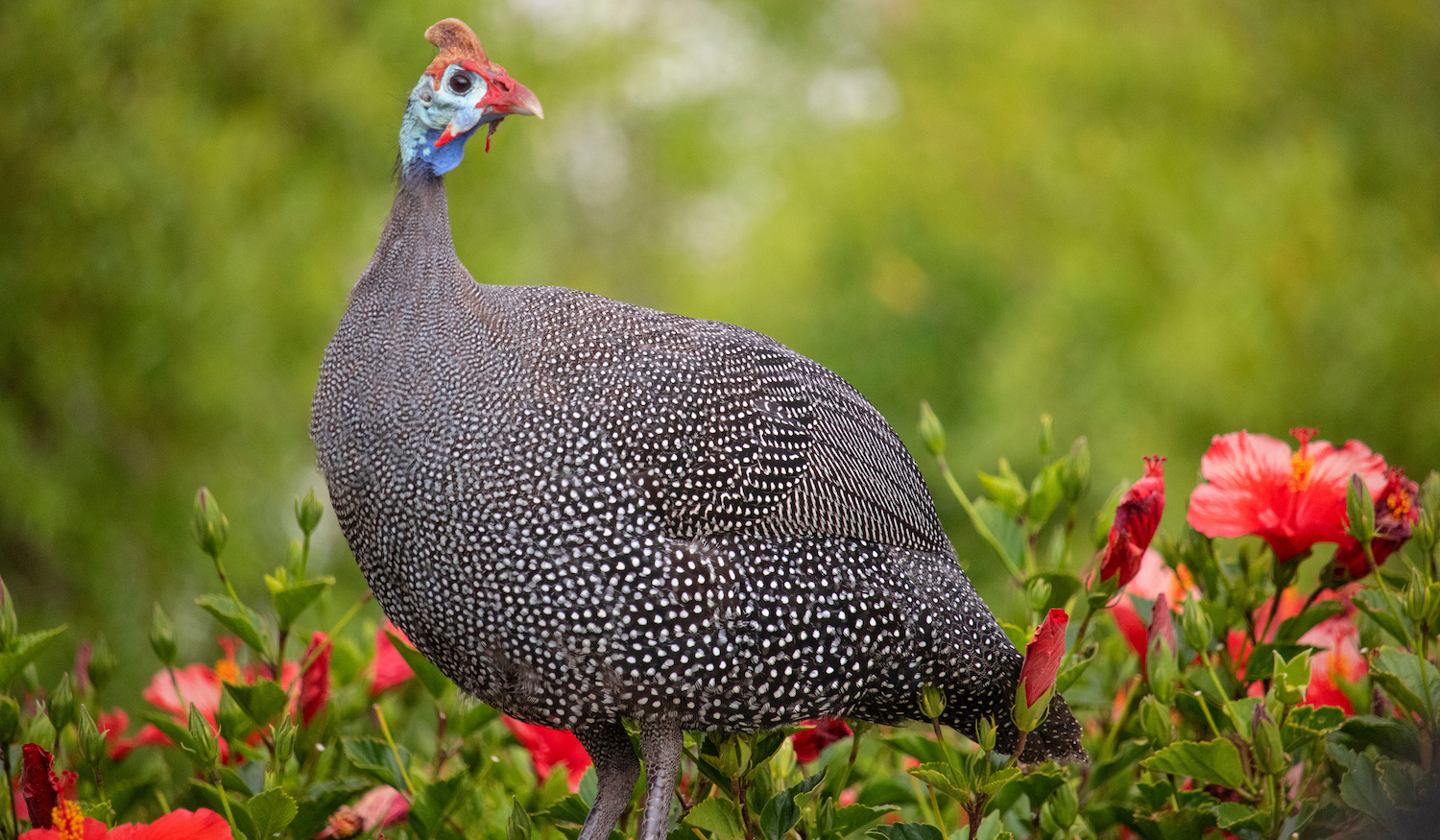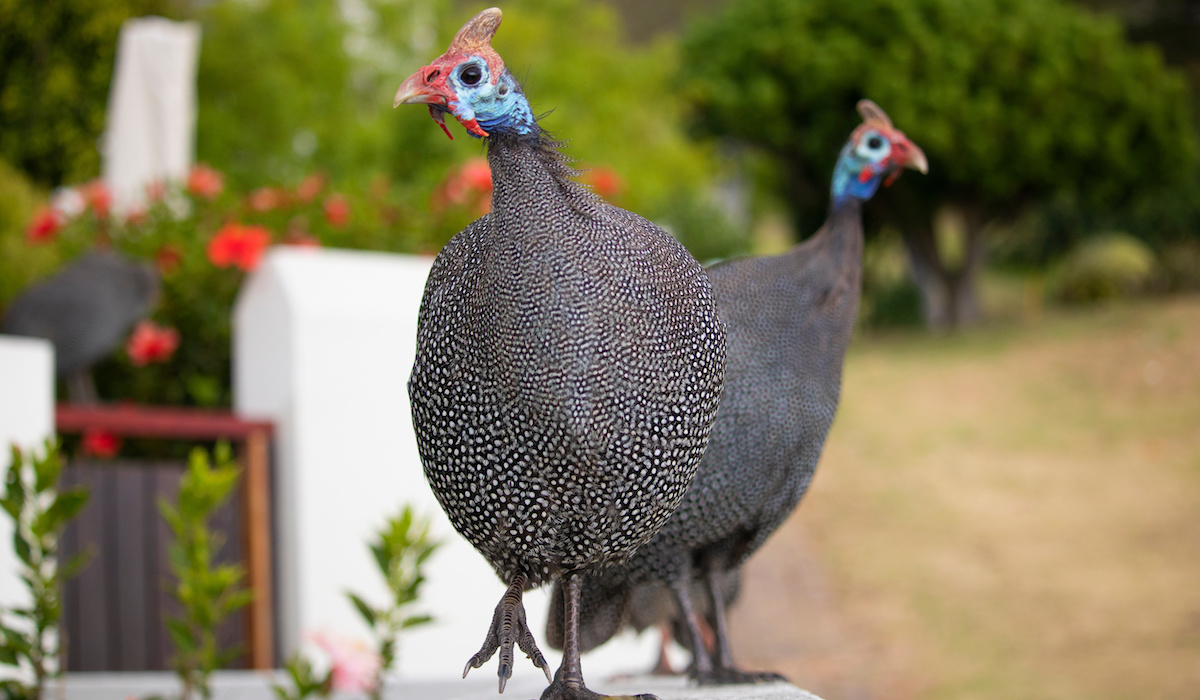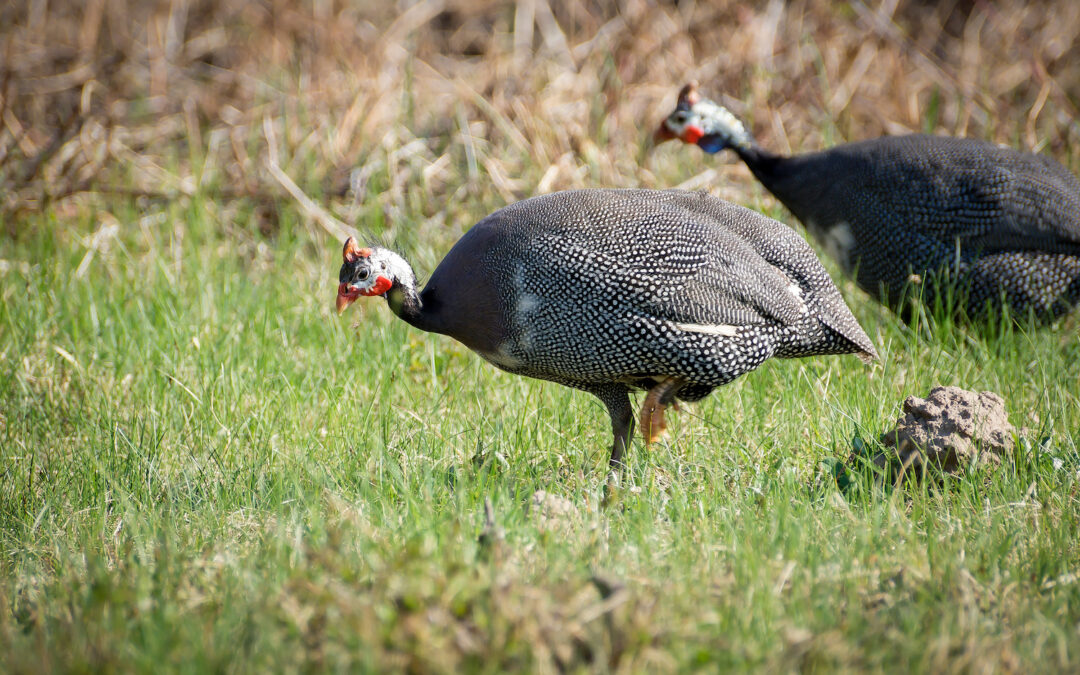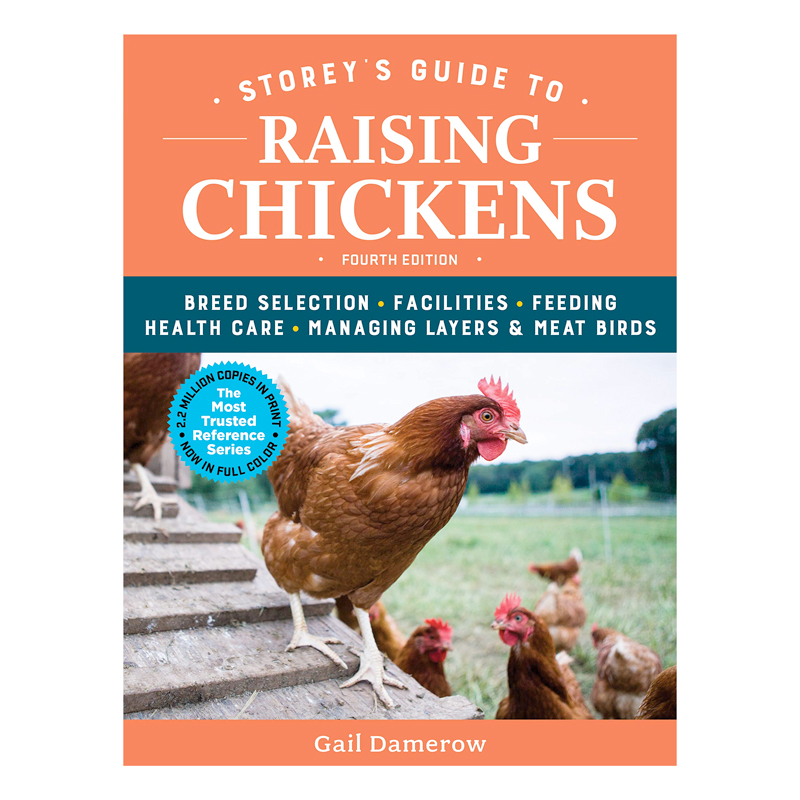Guinea fowl are notorious for wandering away from home and never coming back. Continuing our interview series with Gail Damerow, poultry expert and best-selling author, we ask her for tips on how to keep guineas home.
Why are guineas so difficult to keep home?
Usually they take off after moving to a new and unfamiliar place. Guineas perceive any change as representing danger, which triggers the flight response.
If, for example, you purchase mature guinea fowl, they will not have acclimated to your facilities. They are not sure where they live, and maybe they’re trying to get back “home.” Even when you raise the guineas from keets (baby guineas), if you move them from one part of your property to another, they will try to get back to the first location on your property.
So moving guineas is trickier than moving chickens?
Most definitely. After a move, they need to be confined a lot longer before they catch onto where “home” is. Chickens need only 3 or 4 days of confinement. With guineas, on the other hand, a lot of people keep them in for a good 6 weeks.
And then you can let them out?
Not exactly. At least not all at once. Another difference between guineas and chickens is that guineas move together as a group. If one takes a notion to fly into the sunset, they’ll all go with.
So how do you deal with that?
After the period of confinement, let out only one guinea. It won’t go far without its pals. At night it will want to roost with the rest of the gang inside the coop. After a day or two, let out two, and so forth.
By the time you let them all out at once, they will have become used to returning to the coop at night. They have learned by then that the coop represents food, water, and a safe place to roost.
And speaking of roosting, guinea fowl feel safest on a perch that’s high off the ground. That’s why they like to roost in trees. When you provide high perches inside the coop, they feel safer than on low perches. And they are less likely to seek a high roosting place outside.

Is raising keets easier, then?
The easiest way to brood keets is together with chicks, so the keets get used to hanging around with the chickens. Even though keets are smaller than most chicks, their activity level at the same age makes them compatible. When they move from the brooder into the coop, the guineas follow the chickens inside at night.
What if you don’t have chicks to brood?
That depends on the specific scenario. Let’s say you’re raising just the one batch of keets. As soon as they are big enough to leave the brooder, they should move into their permanent coop. Better yet, if at all possible, brood them in their permanent coop from the start.
On the other hand, if you move them from the brooder into a grow house, and then into the coop, you’ll need to follow the same procedure as for acquiring adult guineas. But if you already have guineas and you’re raising more that you want to integrate, that’s again a different story.
How so?
Keets that are raised apart from mature guineas and then combined into the flock are likely to get run off as intruders by the older guineas. But if you pen the growing keets where the mature guineas can see them, the older guineas will tend to hang around near the pen. In that way they get acquainted as the keets grow. And by the time the keets join the flock, they’ll already be accepted as part of the gang.

What about letting guinea hens raise the keets?
Guinea hens make lousy mothers. On the one hand guinea fowl, both mom and pop, fiercely protect their young from intruders. On the other hand, they don’t seem to understand that the little ones can’t run as fast as they do. So they commonly lose keets that lag behind.
How about penning the mother and keets, like you would chickens?
That seems like a great idea until you try to feed them. The mother guinea isn’t thinking that you’re bringing something good to eat. She’s more focused on keeping you away from the keets, and that can get pretty nasty.
But having a chicken hen hatch and brood the keets, that works. A hen might warn you away from her chicks, but she doesn’t attack as fiercely as a guinea hen would. She will treat the keets the same as she would her own chicks. And as the keets grow, they will continue to live wherever their foster mom lives.
You haven’t mentioned wing clipping or a covered run.
The usual reason for having guineas in the first place is for bug control. They can’t be patrolling your property if they are in permanent confinement. And while they are out and about, they can’t easily get away from predators if they can’t fly. So, as far as I’m concerned, wing clipping and covered runs are not good options for guinea fowl.
Any last tips on how to keep guineas home?
Sure. Each evening while the guineas are young, offer them a tasty snack — a handful of scratch grain, mealworms, or black soldier fly larvae. By the time they start going out to explore, they’ll eagerly return to the coop in the evening for their usual treat.
As you can see, knowing how to keep guineas home is not all that difficult. It just requires learning to understand and work with their inherent nature.

Gail Damerow has been keeping chickens for nearly 50 years and has written several books about them including Storey’s Guide to Raising Chickens, The Chicken Health Handbook, The Chicken Encyclopedia, Hatching and Brooding Your Own Chicks, and What’s Killing My Chickens. For more about Ms. Damerow, visit her blog at GailDamerow.com.
Gail Damerow’s headshot courtesy of Kathy Shea Mormino.




